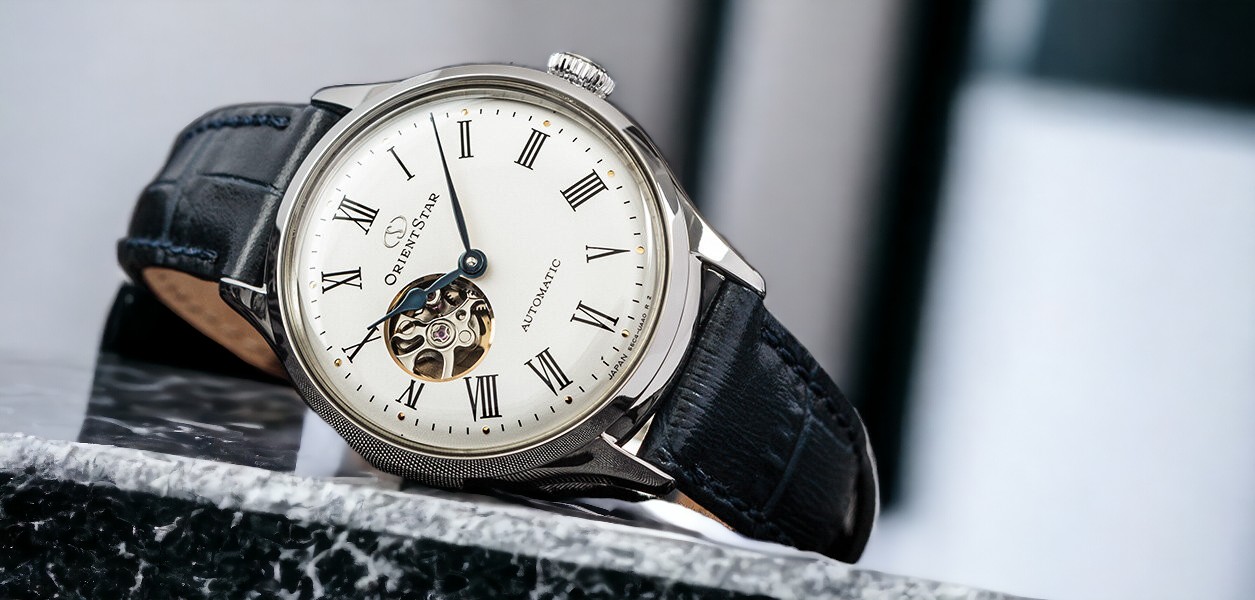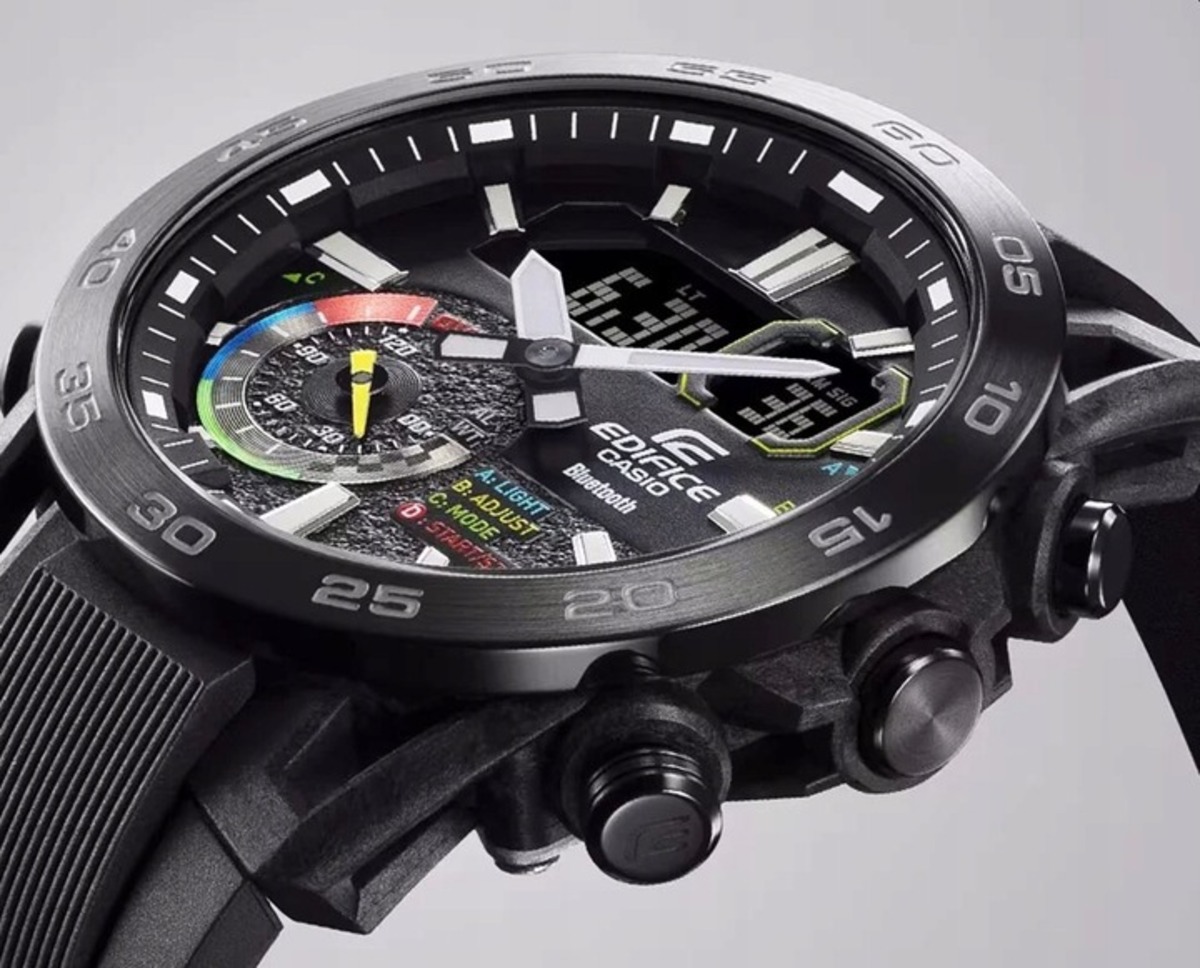Watch Size – How to Choose the Perfect Model for Your Wrist?
A watch is more than just a time-measuring device – it is also a style statement and an expression of personality. To ensure that a watch looks good and is comfortable, it must be properly fitted to the wrist. The choice is not limited to aesthetics alone – watch size and wrist compatibility is a key factor that affects wearing comfort.
In this guide, you will find practical tips on how to choose the right watch size, what to consider when buying, and what to pay attention to so that your timepiece fits perfectly on your wrist.
Why does watch size matter?
Not every watch suits every wrist. Wrist circumference determines which model will look harmonious and be comfortable for everyday use. Whether you opt for a classic, sports, or casual watch, watch size impacts both functionality and appearance.
If the watch is too large, it may look disproportionate and feel uncomfortable. If it is too small, it may make the wrist appear bulkier than it actually is. The ideal watch is one that fits well, complements your body structure, and does not restrict movement.
Tip: If you have a slim wrist, avoid models with a large case – they may look disproportionate. If your wrist is thick, a watch with a small dial may appear too delicate.
.jpg)
Timeless style and eye-catching green – this is what the Luminox XS.0937 men's watch looks like.
How to measure your wrist for a watch?
To choose the right watch size, it is worth determining your wrist circumference first. You can do this easily:
✔ Take a tailor’s measuring tape and wrap it around your wrist where you usually wear a watch.✔ Check the measurement and match it to the following categories:
| Wrist Circumference | Wrist Type | Recommended Case Diameter |
|---|---|---|
| Up to 16 cm | Very Slim | 36-40 mm |
| 16-17 cm | Slender | 38-42 mm |
| 17-18 cm | Medium | 40-44 mm |
| Over 18 cm | Thick | 42-46 mm |
Tip: If you are unsure between two sizes, choose the smaller one – it will be more versatile and elegant.
How to match a watch to your body type?
Not only wrist circumference but also body structure influences which watch size will look best.
✔ Slender individuals – should opt for watches with thin straps and smaller dials (36-40 mm).
✔ People with an average build – standard-sized models (38-44 mm) will look proportionate.
✔ People with a larger build – watches with larger dials (42-46 mm) will better match the wrist.
Watch style also matters. Slim models with leather straps match formal outfits, while bulkier watches with metal bracelets are more casual.
How to adjust a watch bracelet?
A well-fitted watch is not just about the right case but also a well-matched bracelet or strap.
How loose should a watch bracelet be?
✔ The watch should fit snugly on the wrist but not be too tight.✔ It should be loose enough to slide one finger between the bracelet and the skin.
✔ If the watch slides and moves too much, the bracelet is too loose.
How to adjust a watch to your wrist?
✔ Metal bracelets can be adjusted by removing links.✔ Leather straps are more flexible and easier to adjust.
✔ If precise adjustment is needed, visit a watchmaker.
Which watch elements affect its proportions?
When choosing a watch size, consider several technical details:
✅ Case diameter – the primary factor affecting the watch’s proportions.
✅ Watch thickness – the thicker it is, the bulkier it looks.
✅ Strap width – should be about 50% of the case width.
✅ Lug-to-lug length – if it extends beyond the wrist width, the watch may look too large.
Tip: Cases above 42 mm are best for larger wrists. If you have a smaller wrist, opt for models between 38-40 mm.
How to measure a watch before buying online?
Buying a watch online is convenient, but it requires some preparation. To avoid mistakes, you should:
- Measure your wrist circumference (as explained above).
- Check the watch specifications – look at case diameter, thickness, and strap width.
- Compare with a watch you already own – if you have a well-fitting model, check its dimensions.
- Look at user reviews – customer photos often show how a watch looks on the wrist.
Which watch to choose? Classic or modern?
Choosing a watch is not just about size – style is equally important and should match your personality and daily wardrobe. Depending on the occasion and preference, you may choose between classic men’s watches or more modern designs.
Classic men's watches – elegance and timeless style
If you value sophistication and timeless elegance, opt for a classic watch. It is the perfect choice for those looking for a versatile accessory to wear with a suit or elegant attire. These watches feature a slim case, a leather strap or a stylish bracelet, and a subdued color scheme. Models such as Epos Oeuvre D'art Big Moon and Davosa Ternos are icons of men's elegance.
Tip: If you have a slim wrist, choose a classic watch with a 38-40 mm diameter – it will look subtle and proportionate.
➡ Check out our collection of classic men's watches.
Summary – how to choose a watch for your wrist?
✔ How to choose the right watch size? First, measure your wrist and match it to the case size.✔ Wrist circumference and watch proportion – proportions are key for aesthetics and comfort.
✔ How to adjust a watch bracelet? It should be slightly snug but not tight.
✔ How to measure a watch before buying online? Check dimensions, compare with your watches, and read reviews.
A well-chosen watch is not just about functionality but also comfort. By selecting a model suited to your wrist, you gain an elegant and comfortable accessory for years to come.
See popular articles

Why is a watch worn on the left wrist? We explore the origins of this rule!
Why is a watch worn on the left wrist? This question returns regularly, especially when someone wears it differently than most people. Although it might seem like a matter of fashion or chance, there's specific history, comfort, and watchmaking logic behind this choice. Check what really lies behind this everyday habit – and whether it's still worth sticking to it today.

Chronograph in a watch – what is it, how does it work, and what is it for?
Zegarki z chronografem od lat przyciągają uwagę nie tylko wyglądem, ale też funkcjonalnością. Choć dla wielu to po prostu dodatkowe tarczki i przyciski, w rzeczywistości kryje się za nimi precyzyjne narzędzie do pomiaru czasu. Jeśli zastanawiasz się, co to jest chronograf, jak działa i czy warto mieć go w swoim zegarku, ten artykuł pomoże Ci zrozumieć wszystko w prosty i praktyczny sposób.

What does a 5 ATM water resistance rating mean on a watch?
You see "5 ATM" marking on your watch dial and wonder what it actually means? Although it sounds technical and gives the impression of solid water protection, reality can be more complicated. Before you dive into a pool with your watch, learn the limitations and pitfalls of this popular water resistance class. This way you'll avoid costly mistakes.

Types of watch glass - learn the differences between mineral, sapphire and acrylic
Choosing the right glass in a watch is more than just a matter of aesthetics - it's a decision that affects the durability, comfort and daily use of the timepiece. Whether you're considering mineral, sapphire or acrylic glass, it's worth learning about their strengths and weaknesses in order to make an informed choice - and not just "by eye."

Which watch for manual labor? Welcome to our ranking of durable models!
Looking for a watch that can handle tough conditions and won't let you down during an intense day in the field? You've come to the right place. Not every timepiece is suitable for manual labor - some watches are fragile, prone to scratches or simply unsuited to withstand contact with dust, moisture or strong shocks. In this article we suggest which watch for manual labor will be the best choice, and present a ranking of durable models that combine durability with practical functionality.

How to clean a watch bracelet – step-by-step guide
Over time, even the nicest watch with a bracelet can lose its charm - all it takes is daily contact with skin, sweat and cosmetics. Fortunately, cleaning a watch bracelet can easily be done by yourself, without specialized equipment. In this tutorial, I will show you how to restore the luster of any watch step by step, regardless of the material of the bracelet.

Fogged watch glass – what to do when steam appears under the glass?
A fogged-up watch glass can surprise you when you least expect it - in the morning before going out, after a walk in winter or after a hot bath. It does not always mean failure, but it is never worth ignoring. Find out exactly what a fogged up watch means, where the steam under the glass comes from and how to deal with it effectively - before it's too late.

James Bond's watch – which models did Agent 007 wear?
Bond's watch is not just an accessory - it's part of Agent 007's identity. Over six decades, actors, scripts and gadgets have changed, but one thing has remained constant: there has always been a unique timepiece on James Bond's wrist. Sometimes elegant, sometimes armed with technology, but always precisely matched to the style and era. If you're wondering why James Bond watches have made such a mark on pop culture history, this guide will dispel your doubts.

Quartz movement in a watch – what does it mean and how does it work?
The quartz movement is one of the greatest achievements of modern watchmaking – precise, reliable, and virtually maintenance-free. Thanks to it, quartz watches have become an everyday standard, combining technology with ease of use. It is this inconspicuous innovation that has given timepieces a new dimension – practicality and accuracy that does not require your attention every day.











